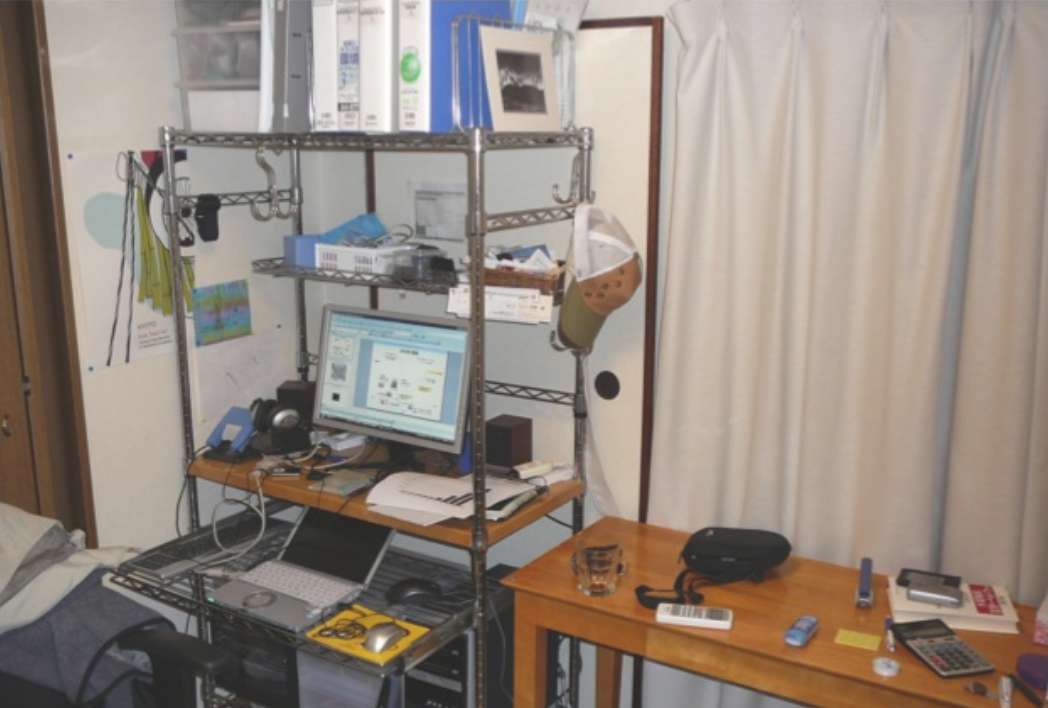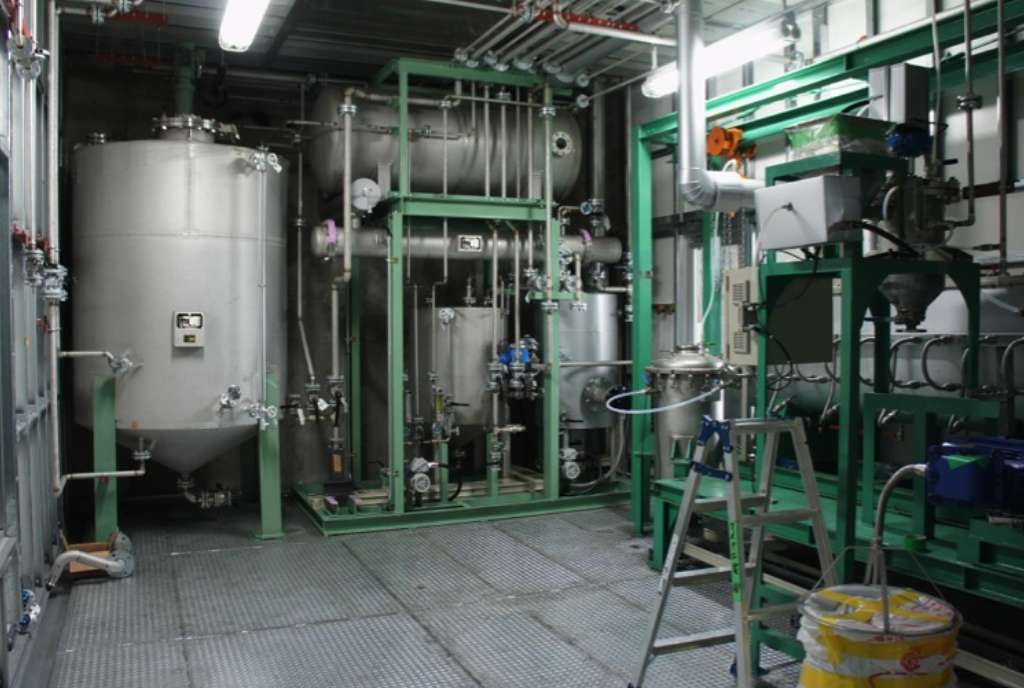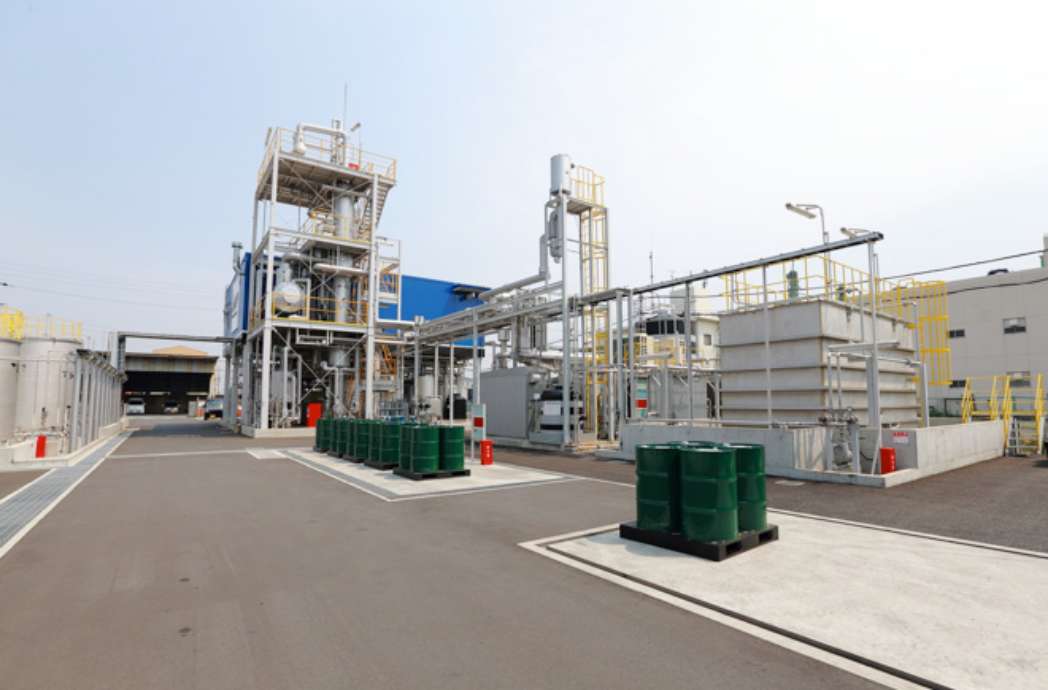©︎ Microwave Chemical Co.,Ltd.
This is the founding story of a company that has the potential to change the world.

MWCC was launched in 2007.
In 2014, we launched the world’s first large scale microwave chemical plant and shipped our very first product that same year.
We are currently accelerating our business, working with global manufacturers in a wide range of products including pharmaceuticals, electronics and edible materials.
When we founded our company, it was ‘industry norm’ that scaling up microwave processing for commercial use was not possible, however, we have been making great strides in our efforts to make it a reality.
The co-founders meet
After university, Iwao Yoshino worked in the chemicals division of Mitsui & Co. It was interesting, but his desire to take on new challenges grew and, somewhat impulsively, he left Mitsui and moved to the US.
While studying for his MBA, he observed startups having a real impact on the world by commercializing new technologies and became determined to do the same.
On returning to Japan in 2006, a mutual friend introduced him to Yasunori Tsukahara, who was researching microwave chemistry at the Osaka University Graduate School of Engineering.
Tsukahara seemed different from other researchers. He was more committed and keen to use the ideas produced at the university to change the world.
The two began speaking frequently over the course of the next 12 months. The phone bills were daunting, but their resolve to revolutionize the chemical industry remained unshaken, and Microwave Chemical Co., Ltd was founded in 2007.
The business started in a humble apartment room
The project started from Yoshino’s apartment.
He and Tsukahara personally funded the ¥6 million startup capital, with further support later procured from public grants.
The officials responsible told them “Where is the research and development taking place? Your apartment?! You need to set up a lab, or we’ll stop the funding”. Only one month after founding the company, it was on the verge of being shut down. But they soon overcame this first obstacle by renting laboratory space at Osaka University.
Just when they thought they were in the clear, the global financial crisis hit.
For quite some time, nobody was lending anybody any money.
Nevertheless, MWCC somehow managed to survive with the help of VC firms, financial institutions, and the aforementioned governmental institutions.

The next hurdle: scaling up
In order to commercialize the process, they needed to scale up the technology.
They faced a major challenge: microwaves simply could not penetrate into the reactors.
Given that they were receiving government grants, they knew that they could not fail. Yoshino still recalls clearly being in the depths of despair, when suddenly Tsukahara announced, “We did it! The microwaves have penetrated the reactor!”
Spurred on by the sense of relief, they kept scaling up the apparatus through trial and error.

A fresh obstacle: the business model
The company’s current business model is to provide solutions utilizing their Microwave Technology Platform, but that wasn’t always the case.
The initial plan had been to sell microwave systems to chemical and food manufacturers for the production of biodiesel from waste oil discarded at their facilities.
However, the idea fell flat.Manufacturing companies are risk-averse and tend to shy away from new technologies such as microwaves. “What are these microwaves? Aren’t they bad for your health? We’re not having something we don’t understand in our plant!”
MWCC then pivoted to becoming a biodiesel producer itself… but the biodiesel market failed to take off.
Finally, the company hit upon a different business model. What if we sold the process instead of a product? They decided to offer chemical manufacturers the technology platform.
Another challenge: “production line No. 1”
All that was left to do was reach out to chemical manufacturers with this new business model, but a further problem emerged.
When they were told they could reduce their energy consumption to 1/3 with 1/5 the plant footprint, chemical manufacturers showed great interest and the joint development began.
However, as soon as the conversation turned to “Which other plants use this technology?” and they found out they were going to be the first, they hit the brakes.
Essentially, nobody was prepared to take on ‘untried’ technology. When one works with novel, unprecedented technology it is common that there is no precedent, but for a chemical industry filled with big corporations focused on safety and security, this lack of a track record presented a huge challenge.
A barrier to establish “production line No. 1” – this was another wall that the company had to break through.
Yoshino and Tsukahara decided that they had to build “production line No.1” by themselves to prove that this microwave technology was viable.
This step ran counter to the conventional wisdom surrounding start-ups, which is that success comes from focusing on research and development. Building its own plant was a major decision that drastically shifted the company’s course.
Going global
In the spring of 2014, the Osaka plant began shipping fatty acid esters, a material used to make ink, to a major Japanese producer, Toyo Ink. Newspapers were printed using MWCC’s microwave-based product (note: this particular product is no longer being made, due to changes in our businesses model).
The understanding that microwaves were actually being used in production gradually began to spread throughout the chemical industry. After that, inquiries began arriving from various manufacturers of electronic materials to pharmaceuticals, fuels, and food products.
In 2014, MWCC entered into a joint development agreement with BASF, the world’s largest chemical manufacturer, to produce the polymers used in making plastics and similar products.
MWCC’s relationship with BASF had begun in 2011. Initially, BASF had held the same conventional ideas as other companies in the chemical industry, assuming it would be difficult to scale up microwave-based manufacturing processes.
They were astonished to discover how far the technology had advanced and joined in wholeheartedly with co-development.
2017 saw the construction of a plant for the mass production of food additives, in partnership with Taiyo Kagaku, and preparations for the shipment of finished product are currently underway.
In 2019, a GMP microwave reactor was delivered to a pharmaceuticals plant, where it is already being used for commercial production.

Reinventing the global chemical industry
The company is currently working on various projects concurrently.
Everyone at MWCC is still driven by the dreams which inspired the founders: “To use microwaves to change the face of global manufacturing” and “To create a successful Japanese tech startup”.
The global chemical and energy market is estimated at ¥500 trillion. Replacing just 1% of that with microwaves would represent a ¥5 trillion industry.
We will continue to take up the challenge.
